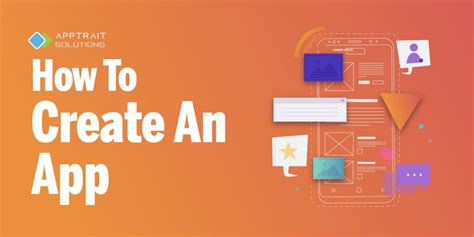How To Create An Application: A Comprehensive Guide
Creating an application, whether a simple mobile app or a complex web application, can seem daunting. But breaking down the process into manageable steps makes it achievable, even for beginners. This guide will walk you through the key stages, offering insights and tips to help you build your application successfully.
1. Planning and Conceptualization: Laying the Foundation
Before writing a single line of code, meticulous planning is crucial. This stage defines the application's core functionality and target audience.
1.1 Define Your App's Purpose and Target Audience:
- What problem does your app solve? Clearly articulating the app's purpose helps you focus development.
- Who is your target audience? Understanding their needs and preferences guides design and feature choices. Consider age, tech-savviness, and platform preferences (iOS, Android, web).
1.2 Feature Prioritization:
- Start with the Minimum Viable Product (MVP): Focus on essential features. Avoid overwhelming yourself with too many functionalities initially.
- Prioritize Features: Rank features based on importance and user impact. Develop core functions first, then add extras later.
1.3 Choosing a Platform:
- Native (iOS or Android): Offers optimal performance and access to device features. Requires separate development for each platform.
- Cross-Platform: Frameworks like React Native or Flutter allow for building apps for multiple platforms with a single codebase. Performance may slightly compromise compared to native apps.
- Web Applications: Accessible through any browser, ideal for broad reach, but limited access to device-specific features.
2. Design and User Interface (UI) Development: Crafting the User Experience
A well-designed UI is critical for user engagement and app success.
2.1 Wireframing and Mockups:
- Wireframes: Simple sketches outlining app layout and functionality. Focus on structure and user flow.
- Mockups: More detailed visual representations, simulating the final app's look and feel.
2.2 User Experience (UX) Design:
- Intuitive Navigation: Ensure easy and logical navigation.
- User-Friendly Interface: Employ clear and concise labels, visual cues, and consistent design elements.
- Accessibility: Design for users with disabilities, considering screen readers and alternative input methods.
3. Development: Bringing Your App to Life
This stage involves writing the code that brings your design to life.
3.1 Choosing Your Tech Stack:
- Programming Languages: Selection depends on your chosen platform (e.g., Swift/Objective-C for iOS, Java/Kotlin for Android, JavaScript for web apps).
- Frameworks and Libraries: Utilize existing tools to streamline development (e.g., React, Angular, Node.js).
- Databases: Choose a suitable database for storing and managing your app's data (e.g., MySQL, PostgreSQL, MongoDB).
3.2 Coding and Testing:
- Iterative Development: Build and test in stages, incorporating feedback regularly.
- Version Control: Use Git to manage code changes, collaborate effectively, and track progress.
- Testing: Thorough testing is crucial to identify and fix bugs before release. Include unit tests, integration tests, and user acceptance testing.
4. Deployment and Launch: Sharing Your App with the World
Once your app is ready, you need to deploy it to the chosen platform.
4.1 App Store Submission (for iOS and Android):
- Prepare your app assets: Create high-quality screenshots, videos, and app store listing descriptions.
- Adhere to platform guidelines: Follow Apple's App Store or Google Play Store submission guidelines carefully.
4.2 Web Application Deployment:
- Hosting: Choose a web hosting provider and deploy your application.
- Domain Name: Register a domain name for your web application.
5. Post-Launch and Maintenance: Ongoing Optimization
Launching is just the beginning. Ongoing maintenance and updates are crucial for long-term success.
5.1 User Feedback and Iteration:
- Collect user feedback: Monitor app reviews and user interactions.
- Iterate based on feedback: Improve your app based on user suggestions and identified issues.
5.2 App Updates and Maintenance:
- Regular updates: Release updates to fix bugs, improve performance, and add new features.
- Security updates: Address security vulnerabilities promptly.
Creating an application is an iterative process. Be patient, persistent, and embrace the learning opportunities along the way. By meticulously following these steps and staying focused on user needs, you can significantly increase your chances of creating a successful and engaging application.
